Importance of Summer Feeding and Farm to Summer
go.ncsu.edu/readext?1026044
en Español / em Português
El inglés es el idioma de control de esta página. En la medida en que haya algún conflicto entre la traducción al inglés y la traducción, el inglés prevalece.
Al hacer clic en el enlace de traducción se activa un servicio de traducción gratuito para convertir la página al español. Al igual que con cualquier traducción por Internet, la conversión no es sensible al contexto y puede que no traduzca el texto en su significado original. NC State Extension no garantiza la exactitud del texto traducido. Por favor, tenga en cuenta que algunas aplicaciones y/o servicios pueden no funcionar como se espera cuando se traducen.
Português
Inglês é o idioma de controle desta página. Na medida que haja algum conflito entre o texto original em Inglês e a tradução, o Inglês prevalece.
Ao clicar no link de tradução, um serviço gratuito de tradução será ativado para converter a página para o Português. Como em qualquer tradução pela internet, a conversão não é sensivel ao contexto e pode não ocorrer a tradução para o significado orginal. O serviço de Extensão da Carolina do Norte (NC State Extension) não garante a exatidão do texto traduzido. Por favor, observe que algumas funções ou serviços podem não funcionar como esperado após a tradução.
English
English is the controlling language of this page. To the extent there is any conflict between the English text and the translation, English controls.
Clicking on the translation link activates a free translation service to convert the page to Spanish. As with any Internet translation, the conversion is not context-sensitive and may not translate the text to its original meaning. NC State Extension does not guarantee the accuracy of the translated text. Please note that some applications and/or services may not function as expected when translated.
Collapse ▲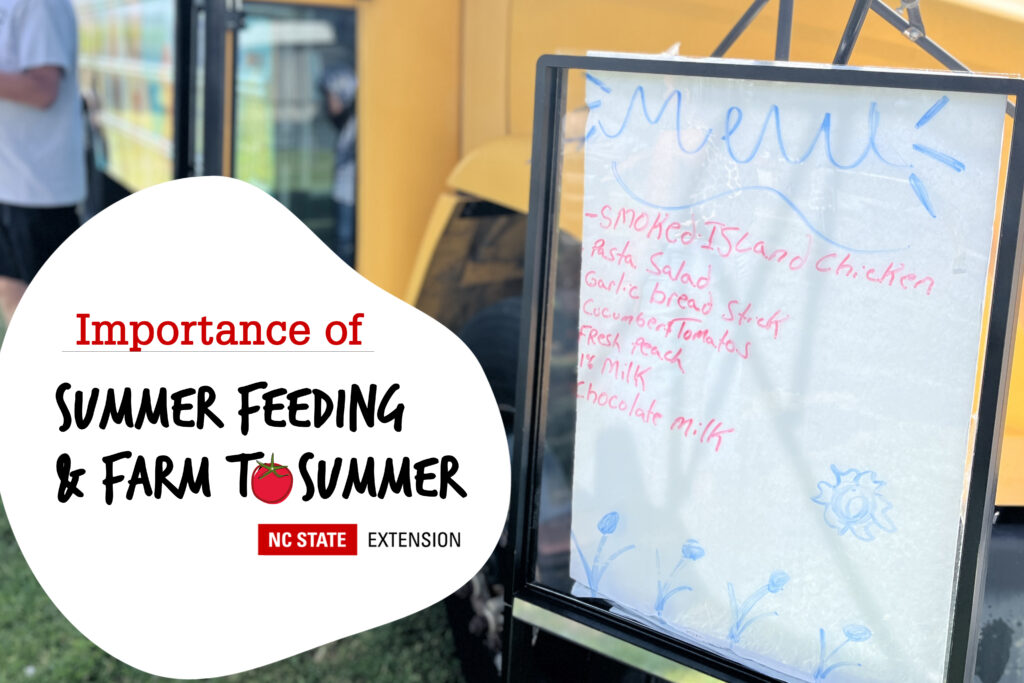
The new school year has officially begun for many students across North Carolina. While we are excited to see the impacts of Farm to School during the school year, we want to appreciate and highlight the significant impacts of Farm to School during the summer months.
Farm to School goes beyond activities performed and meals served during the school year. In fact, farm to school plays an essential role during the summer months by promoting local foods in meals and supplementing them with enrichment activities. For students who rely on the National School Lunch Program (NSLP) during the school year, having access to free nutritious meals during the summer through the Summer Food Service Program (SFSP) makes all the difference. Beyond providing access to free meals, many sites engage in hands-on gardening and cooking activities with students.
Vance County Boys and Girls Club
Numerous partners around North Carolina have implemented creative ways to feed students local food through summer meals and engage them in fun hands-on farm to school activities. For the past two summers, we have partnered with the Boys and Girls Club of North Central North Carolina in Vance County to provide gardening and nutrition education to their students. For our first activity with the students, we helped them design a garden space of their choosing to help them think about the type of things they’d like to see in their garden at the Boys & Girls Club (Figure 1).
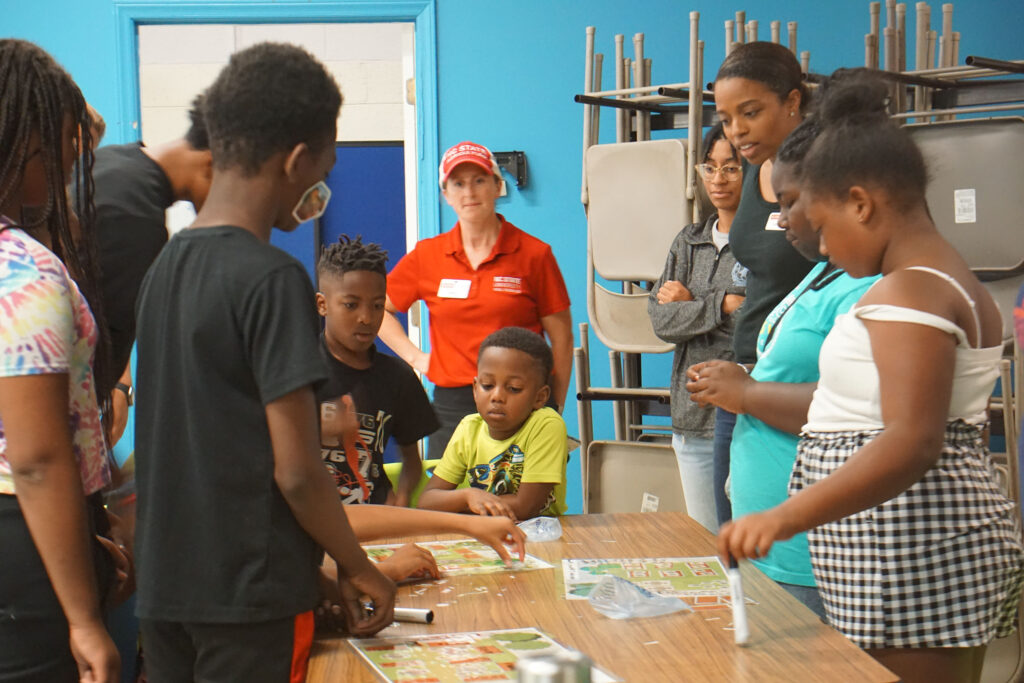
Figure 1: Students generated design ideas for the Boys and Girls garden and brainstorming crops.
After the design activity, our team helped the students and staff of the Boys & Girls Club build four garden beds. The beds were constructed by and filled by students with the help of Master Gardeners (Figure 2). The students were excited to plant tomatoes, peppers, cucumbers, and so much more in their new garden beds.

Figure 2: Garden beds at the Boys and Girls Club
Connecting locally grown food and nutrition is a vital part of Farm to School implementation. With this in mind, our team piloted cooking in the classroom with mobile cooking carts this summer. Students proudly harvested produce from their garden, learned new recipes, and sampled freshly prepared food straight from their garden’s harvest. The menu featured pesto noodles with harvested basil and locally grown sautéed summer squash.
The cooking cart pilot program is an Extension initiative to improve access to nutritious, quality local foods while playing a critical role in supporting Farm to School initiatives. When students harvest the produce grown in their garden, they learn about the importance of eating healthy, practical cooking skills, local food systems, and reducing food waste (Figure 3). It cultivates valuable critical thinking, problem-solving, responsibility, and teamwork skills. However, most traditional classrooms cannot accommodate true cooking demonstrations or are limited to taste tests with raw produce, leaving many educators or extension agents with few options. These carts are intended as an all-in-one program – modeling a kitchen on wheels. All materials, cooking supplies, and appliances were conveniently located in a mobile station, which helped make demonstrations much more attainable and accessible directly in the classroom (Figure 4).
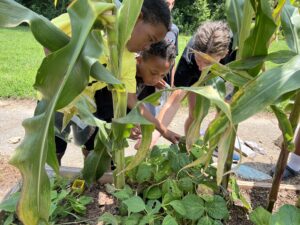
Students harvesting produce
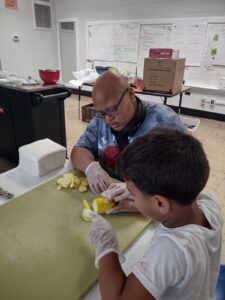
Cutting summer squash in preparation for cooking
These activities would not have been possible without the partnership between Vance County Extension and the Boys & Girls Club of North Central North Carolina.
Craven County Summer Feeding Program
Craven County School Nutrition supports students through the summer with their robust summer feeding program by making part of their operation mobile. Lauren Weyand, School Nutrition Director of Craven County Public Schools, acquired the nutrition bus with the help of her daughter using a grant from UNC Chapel Hill (Figure 5). The nutrition bus allowed the program to bring free school meals to students in their neighborhoods.
On a hot July day, we had the opportunity to learn more about their nutrition bus and how it met the needs of their students. During the first stop, we saw students sprinting to the bus to collect their lunch for the day. The bust was converted to have tables and seats inside to allow students to eat and do other activities on the bus (Figure 6). The inside of the bus was decorated with various coloring and educational activities students could participate in while on the bus.
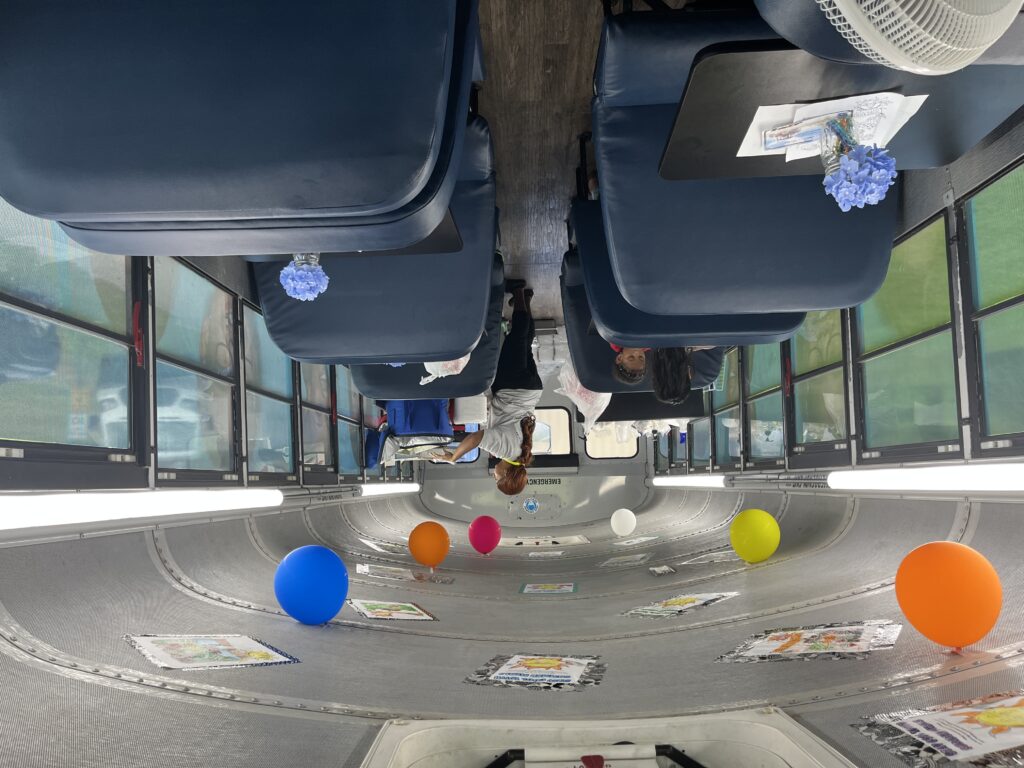
Figure 6: Craven County School Nutrition professional preparing meals for students on the nutrition bus
Vance County and Craven County are insightful examples of how sites can implement farm to school activities to engage students during the summer. Hands-on garden and nutrition activities as well as providing free meals using local food are just some of the many ways to participate. Documenting these efforts have be made possible with generous support from the USDA-NIFA FALSP program (Award #20227002637847).


